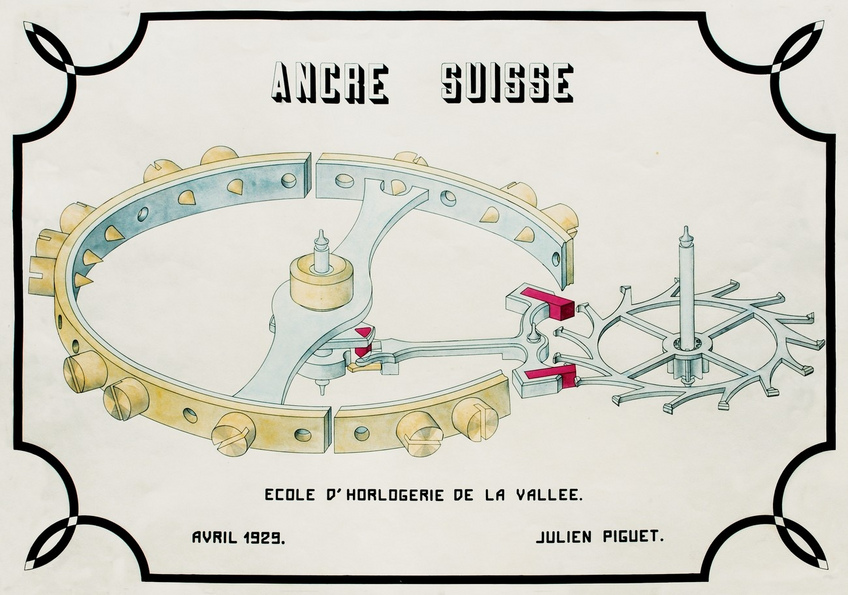

Watchmaking training - the traditional "school-watch"
It is a secular tradition: every watchmaker possesses a unique piece produced during its apprenticeship. End-of-studies masterpieces, these watches are much sought after by collectors.
By William Lucas, Historian - Watchonista's Contributor
The rise of Swiss watchmaking has once again put the mechanical watch on a pedestal. In the euphoria caused by this resumption, some traditions have reborn, at the level of manufacturing and decoration as well as at the level of precision with research and development. As illustrated by the recommencement of the chronometer competitions such as the tradition of the school watches, the heirs of a long tradition which, at Vallée de Joux, has been perpetuated without interruption since the arrival of the first watchmakers in the 18th Century.
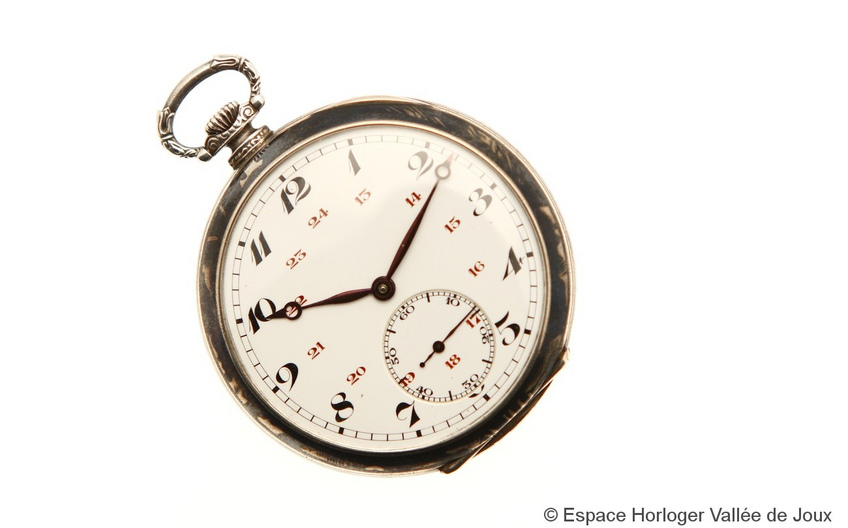
From La Vallée de Joux to Geneva
After the abolition of the regime of corporations, horology was developed at Vallée on the basis of a family apprenticeship. Some watchmakers renowned for their skilled hand, doubled with pedagogical abilities, were in charge of the training of young watchmakers. This craftsmanship, which transmitted from father to son, did not prevent the arrival and integration of strangers at the Vallée.
In the 19th Century, the Vallée de Joux is considered as a true know-how reservoir. It acquired an honest reputation, which exported in the nearby regions. The watchmakers of the Vallée de Joux received Genevan apprentices. We teach “le blanc” (making a non branded watch), just like at François-Victor LeCoultre in the second half of the 19th Century, under-dial work and complicated watches are taught there in the shops of the masters of le Brassus and le Sentier. The demand for the training of Genevan watchmakers is such that the watchmaker masters of the Vallée de Joux end up integrating the Genevan teaching staff to learn the know-hows of the Vallée de Joux in Geneva directly. At the end of the 19th Century, teachers from the Vallée de Joux are found in all the horology schools of the whole Jura Arc.
Watchmaking school, windows of excellence
The international exhibition of Paris in 1878 marks awareness for the watchmakers of the Vallée. The Industrial Revolution starts. The Neuchâtel region already starts its mechanisation and inaugurates a new era. The watchmaking industry is born. It was then up to the will of the Vallée de Joux people to jump on the bandwagon. However, the state of Vaud, in its ancient vision of the economy, gives priority to agriculture. It is thus that the École à la Vallée de Joux project is delayed. Inaugurated in 1901, it is the last born of the Swiss horology schools.
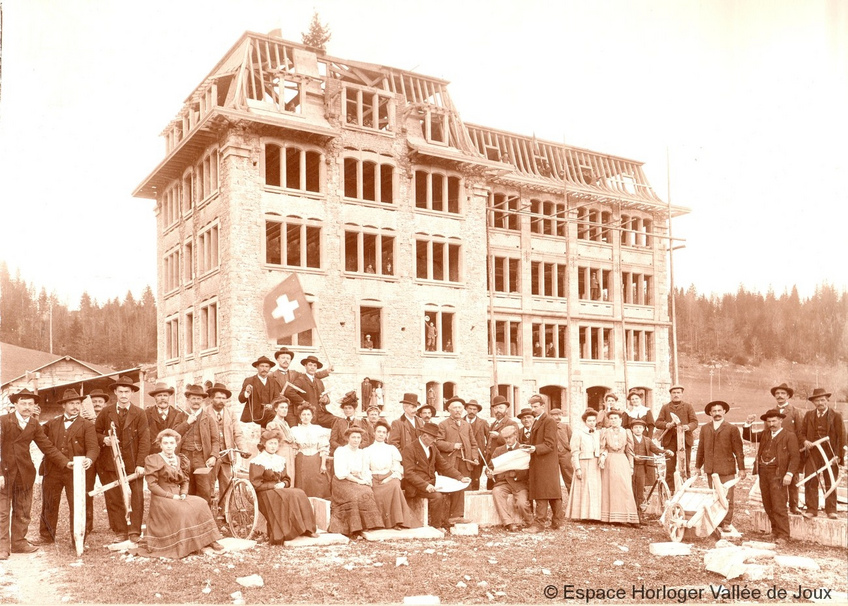
Essential motor of region’s economy, the École Technique of Vallée de Joux has trained several generations of watchmakers.
These men have served their industry and have contributed in making their profession a much sought after craftsmanship by the greatest brands. Not unlike a visiting card or a Curriculum Vitae, their “montre-école” (school watch) has often been the starting point of their professional adventure. Amongst them are some famous names such as Albert Piguet, creator of the chronograph selected by the NASA for a trip to the moon, or Philippe Dufour, considered as one of the best contemporary international watchmaker. These men are vital constituents of the horology culture of the Vallée de Joux.
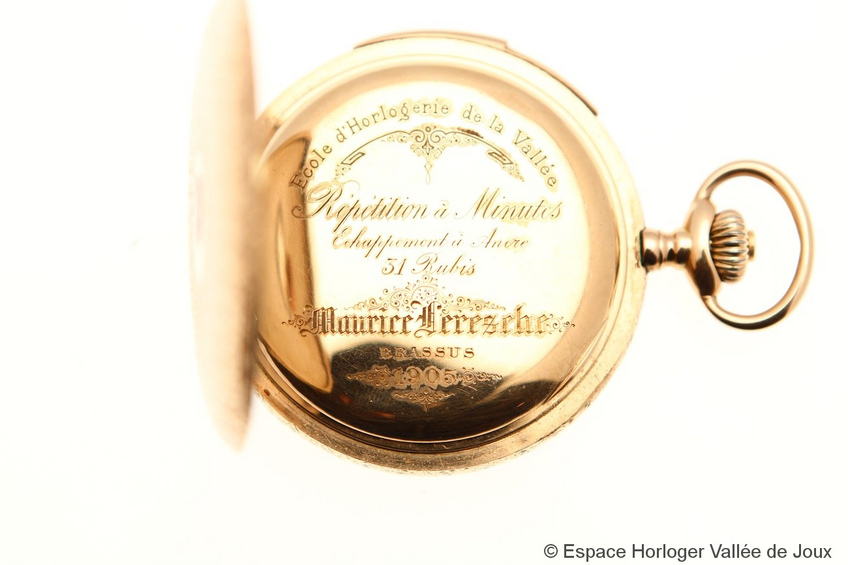
Every school watch is the crowning of several years of studies and the mark of the assimilation of watchmaking craftsmanship by the young apprentices. With a remarkable finishing quality, the “montres-écoles” are not the only creations of these students. The latter are also active in the production of precision equipment. They produce apprenticeship and demonstration modules, identical to the one presented at the national exhibition of Zurich in 1939 which established the reputation of the Vallée de Joux in terms of complication watches. These realisationsreveal a precision, sophistication and tradition message unanimously conveyed by a whole industry.
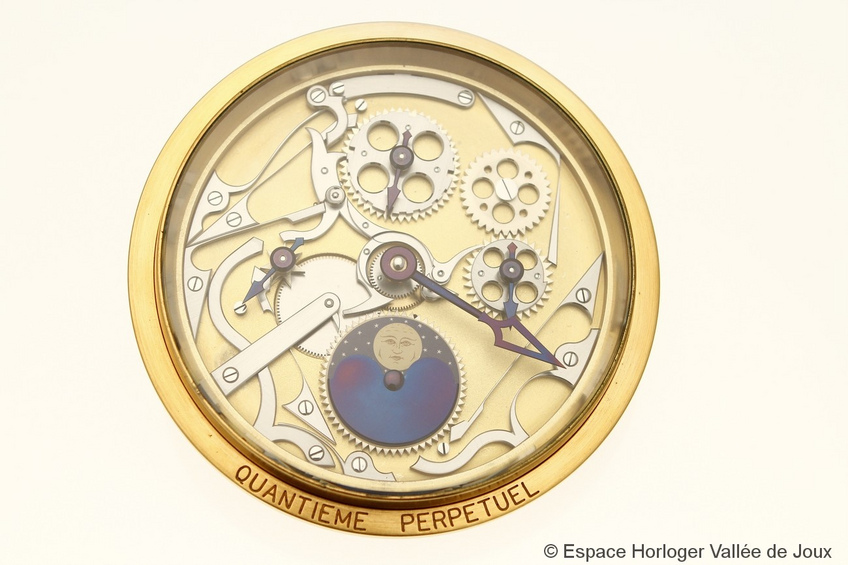
At the end of the 19th Century, a handful of Vallée de Joux visionaries, gathered together in commission, had ended the hesitations concerning the construction of the school. Their report was somewhat alarming, their assessment irrevocable: the gradual disappearing of good master watchmakers, too many youngsters without training in the factories, gaps in the teaching of horology, loss of the monopoly of meticulous and complicated watches manufacturing to the benefit of other entities… Finally, their analysis has prevailed to construct the future, which is our present today. However, in a constantly evolving world, it seems that this centenary assessment is once again on the agenda. At the time, the structuring of the training, which had as emblem the “montre-école”, succeeded in preserving yesterday’s horology. Which will be the solutions to face the stakes of the future?
Horology school, delayed project : « L’Etat de Vaud, in its ancient vision of economy, gives priority to agriculture.”
